ALBINISM Albinism (from Latin “albus” – “white”; see

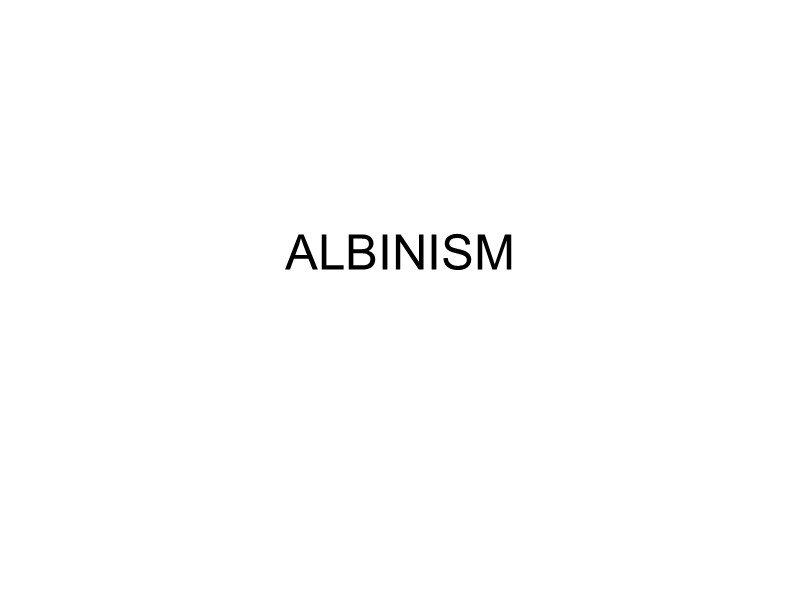
ALBINISM
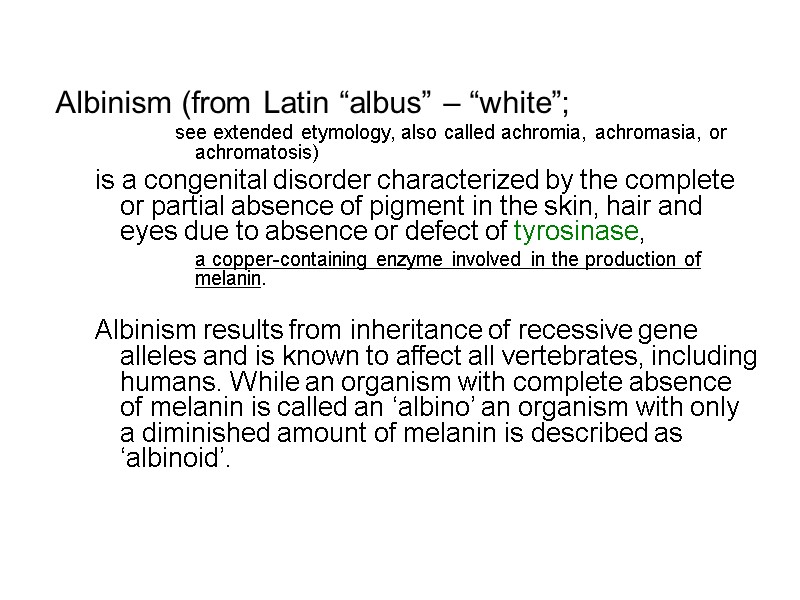
Albinism (from Latin “albus” – “white”; see extended etymology, also called achromia, achromasia, or achromatosis) is a congenital disorder characterized by the complete or partial absence of pigment in the skin, hair and eyes due to absence or defect of tyrosinase, a copper-containing enzyme involved in the production of melanin. Albinism results from inheritance of recessive gene alleles and is known to affect all vertebrates, including humans. While an organism with complete absence of melanin is called an ‘albino’ an organism with only a diminished amount of melanin is described as ‘albinoid’.
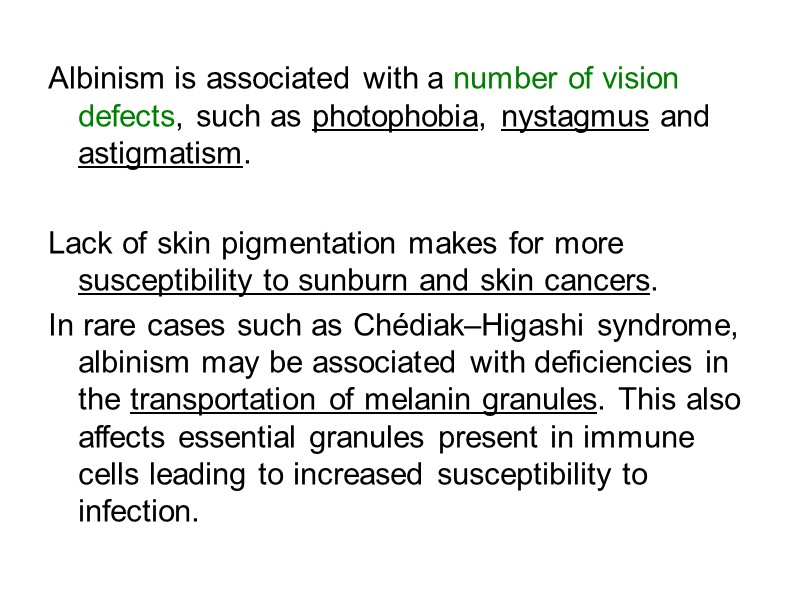
Albinism is associated with a number of vision defects, such as photophobia, nystagmus and astigmatism. Lack of skin pigmentation makes for more susceptibility to sunburn and skin cancers. In rare cases such as Chédiak–Higashi syndrome, albinism may be associated with deficiencies in the transportation of melanin granules. This also affects essential granules present in immune cells leading to increased susceptibility to infection.
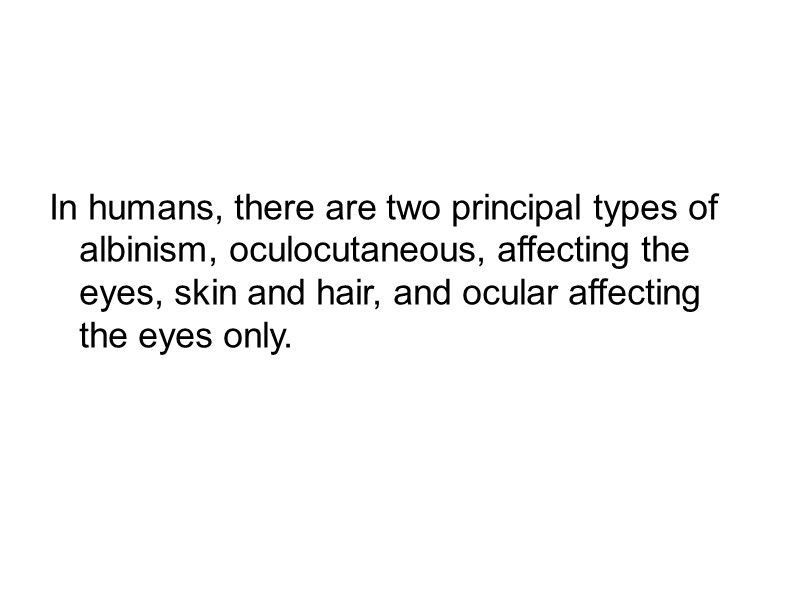
In humans, there are two principal types of albinism, oculocutaneous, affecting the eyes, skin and hair, and ocular affecting the eyes only.
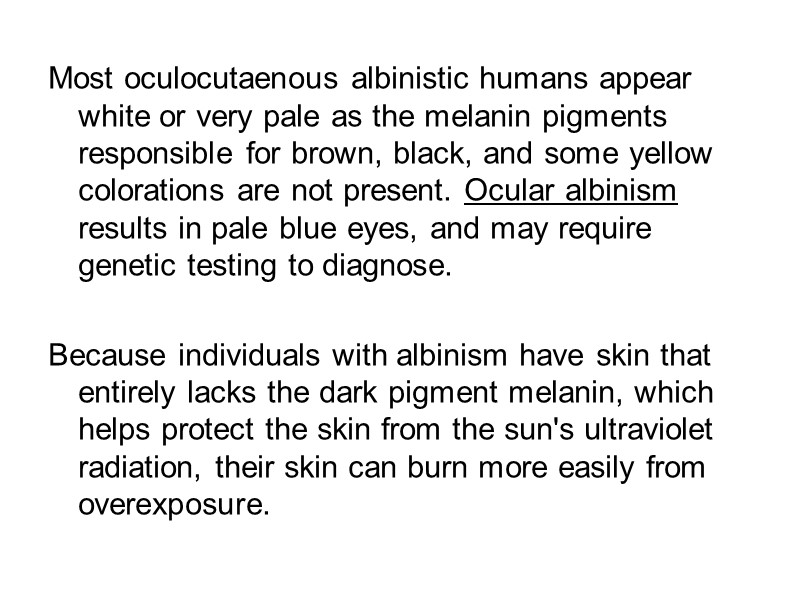
Most oculocutaenous albinistic humans appear white or very pale as the melanin pigments responsible for brown, black, and some yellow colorations are not present. Ocular albinism results in pale blue eyes, and may require genetic testing to diagnose. Because individuals with albinism have skin that entirely lacks the dark pigment melanin, which helps protect the skin from the sun's ultraviolet radiation, their skin can burn more easily from overexposure.
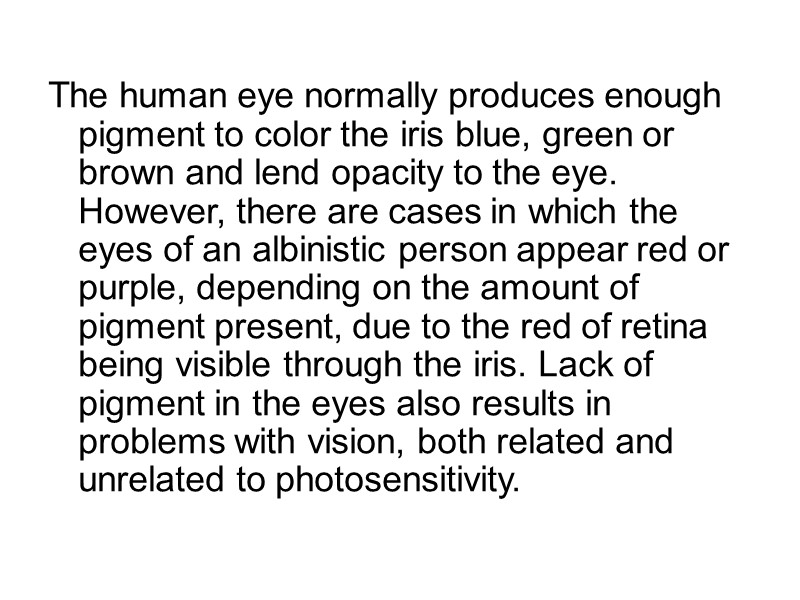
The human eye normally produces enough pigment to color the iris blue, green or brown and lend opacity to the eye. However, there are cases in which the eyes of an albinistic person appear red or purple, depending on the amount of pigment present, due to the red of retina being visible through the iris. Lack of pigment in the eyes also results in problems with vision, both related and unrelated to photosensitivity.
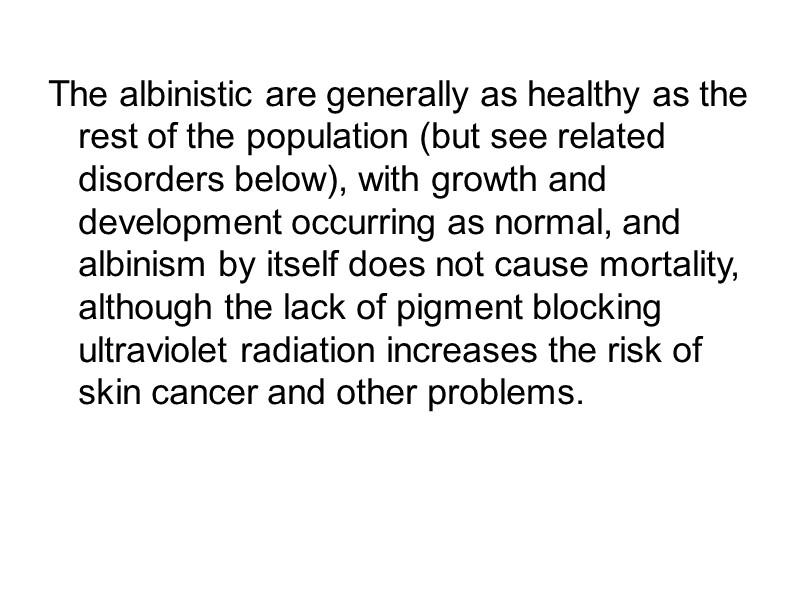
The albinistic are generally as healthy as the rest of the population (but see related disorders below), with growth and development occurring as normal, and albinism by itself does not cause mortality, although the lack of pigment blocking ultraviolet radiation increases the risk of skin cancer and other problems.

Visual problems Development of the optical system is highly dependent on the presence of melanin, and the reduction or absence of this pigment in albinistic individuals may lead to: Misrouting of the retinogeniculate projections, resulting in abnormal decussation (crossing) of optic nerve fibres. Photophobia and decreased visual acuity due to light scattering within the eye (ocular straylight). Reduced visual acuity due to foveal hypoplasia and possibly light-induced retinal damage.
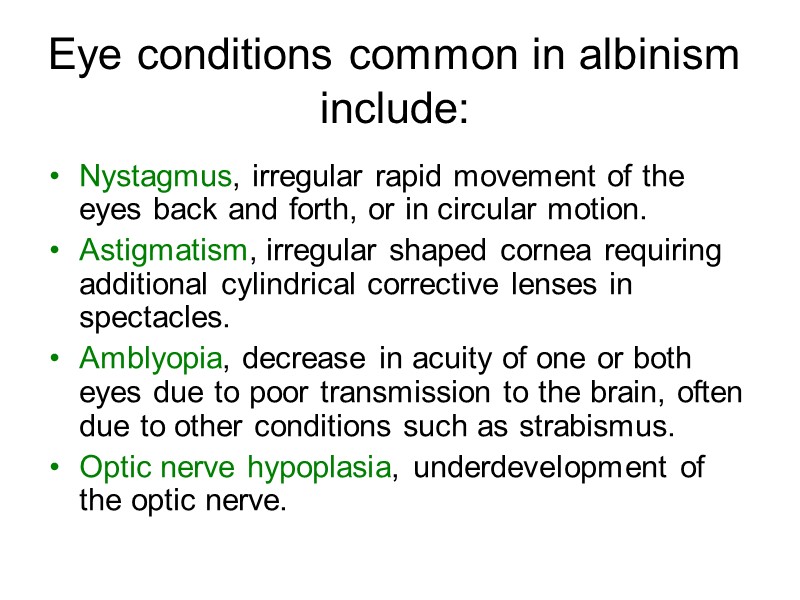
Eye conditions common in albinism include: Nystagmus, irregular rapid movement of the eyes back and forth, or in circular motion. Astigmatism, irregular shaped cornea requiring additional cylindrical corrective lenses in spectacles. Amblyopia, decrease in acuity of one or both eyes due to poor transmission to the brain, often due to other conditions such as strabismus. Optic nerve hypoplasia, underdevelopment of the optic nerve.

Some of the visual problems associated with albinism arise from a poorly developed retinal pigment epithelium (RPE) due to the lack of melanin.
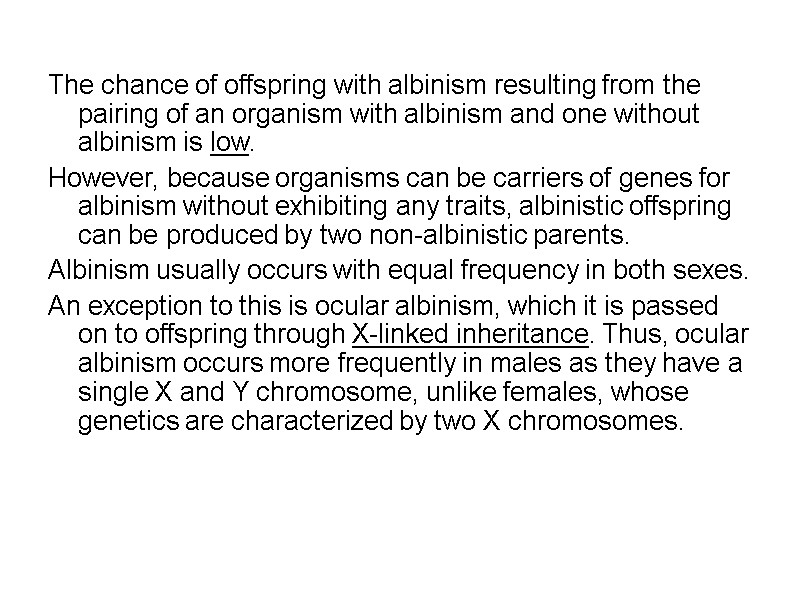
The chance of offspring with albinism resulting from the pairing of an organism with albinism and one without albinism is low. However, because organisms can be carriers of genes for albinism without exhibiting any traits, albinistic offspring can be produced by two non-albinistic parents. Albinism usually occurs with equal frequency in both sexes. An exception to this is ocular albinism, which it is passed on to offspring through X-linked inheritance. Thus, ocular albinism occurs more frequently in males as they have a single X and Y chromosome, unlike females, whose genetics are characterized by two X chromosomes.
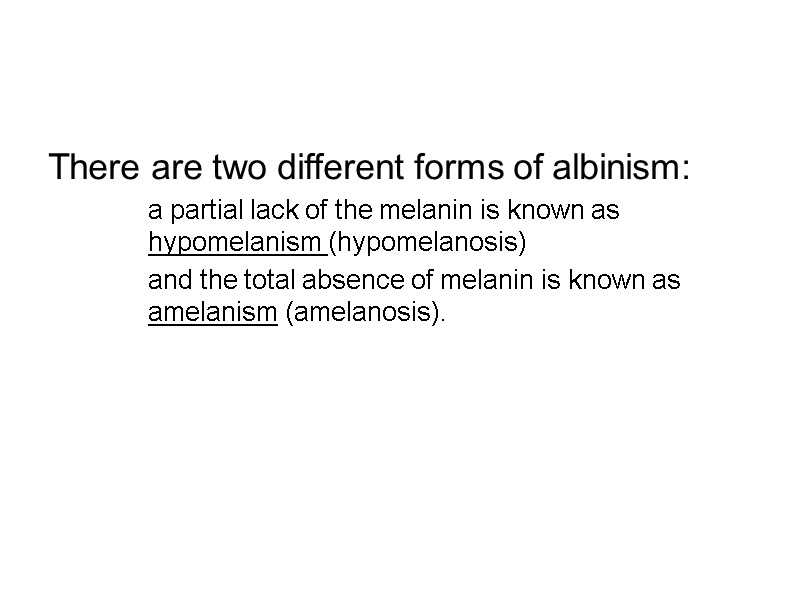
There are two different forms of albinism: a partial lack of the melanin is known as hypomelanism (hypomelanosis) and the total absence of melanin is known as amelanism (amelanosis).
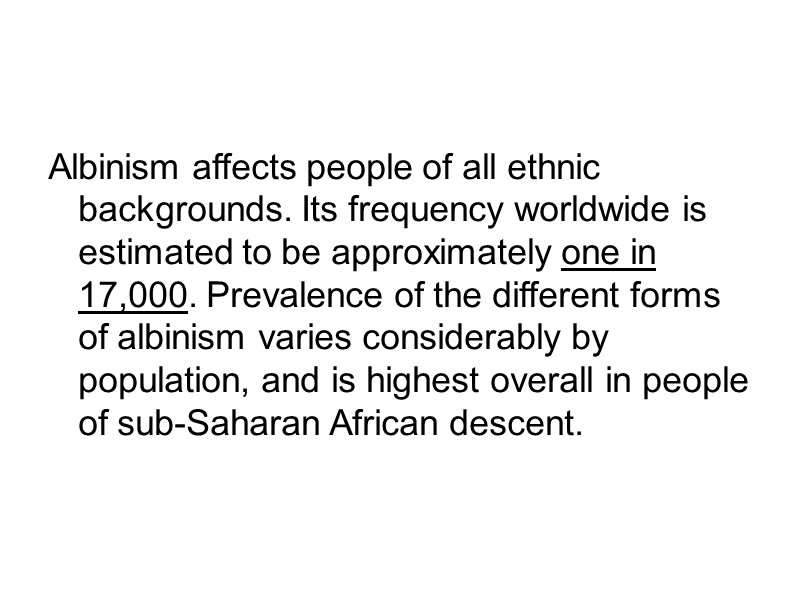
Albinism affects people of all ethnic backgrounds. Its frequency worldwide is estimated to be approximately one in 17,000. Prevalence of the different forms of albinism varies considerably by population, and is highest overall in people of sub-Saharan African descent.

In animals.
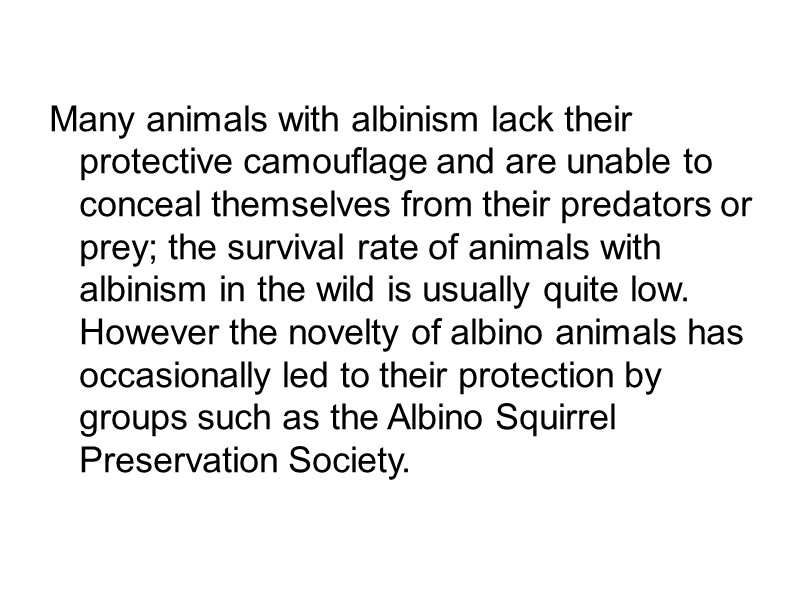
Many animals with albinism lack their protective camouflage and are unable to conceal themselves from their predators or prey; the survival rate of animals with albinism in the wild is usually quite low. However the novelty of albino animals has occasionally led to their protection by groups such as the Albino Squirrel Preservation Society.

In plants.
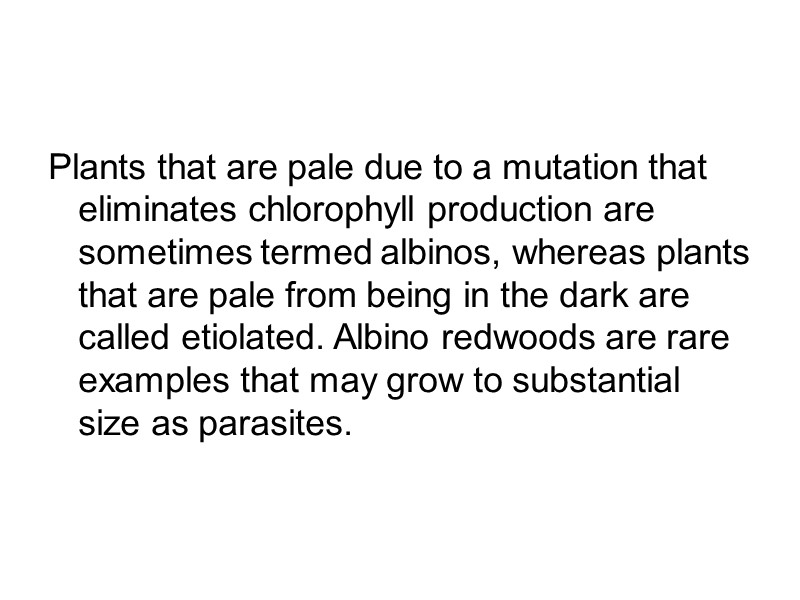
Plants that are pale due to a mutation that eliminates chlorophyll production are sometimes termed albinos, whereas plants that are pale from being in the dark are called etiolated. Albino redwoods are rare examples that may grow to substantial size as parasites.
35778-albinism.ppt
- Количество слайдов: 17

